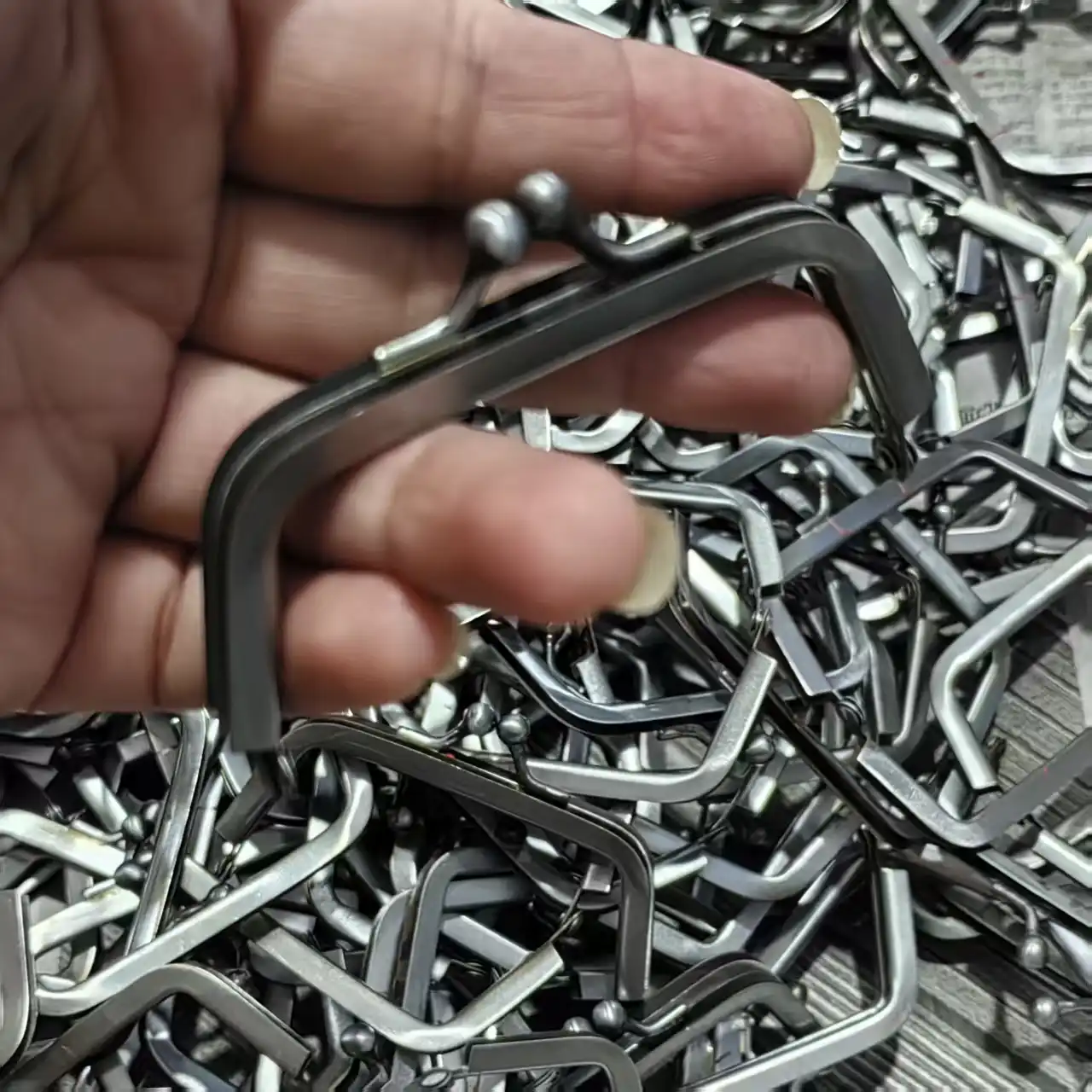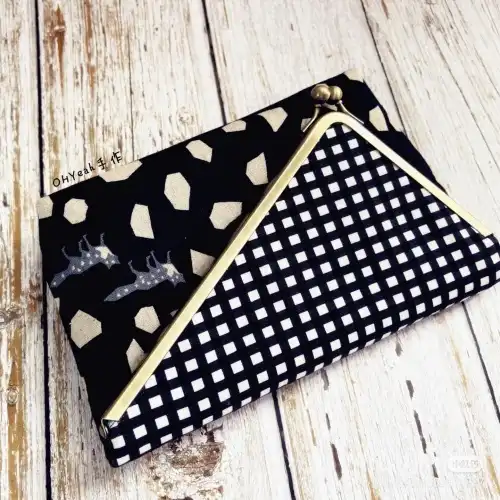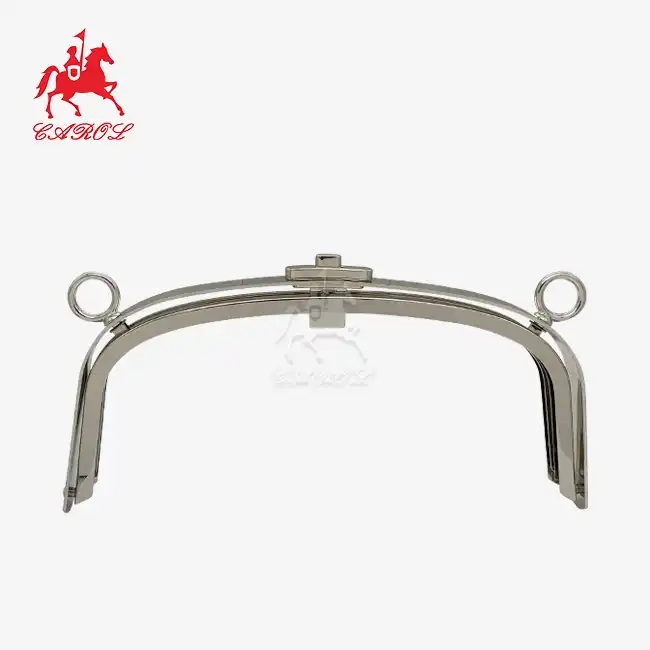What materials are used in the wallet's hardware hinge?
Modern wallet design relies heavily on the functionality and durability of hardware components, with the wallet hardware hinge serving as a critical structural element. The durability and good looks of high-end wallets are decided by these meticulously designed parts. Manufacturers, designers, and consumers who value high craftsmanship in leather goods must understand the material composition of these hinges.
Characteristics of Iron for Hinges
Iron represents the foundational material for many wallet hardware hinge applications due to its exceptional mechanical properties and widespread availability. Due to its ferrous composition, the wallet can endure the frequent flexing motions that are common in its operation. Iron hinges are extremely durable and won't break under stress, so they'll keep working for a long time.
Because of its crystalline structure, iron allows for the precise shaping and machining procedures required to make hinges. The structural integrity and close tolerances needed for pivot mechanisms can only be achieved through expert fabrication procedures. Iron's malleability enables complex geometries without compromising the fundamental strength properties needed for reliable wallet hardware hinge operation.

Iron hinges can be made more corrosion resistant by applying surface treatments such as electroplating, chemical conversion, or powder coating. In addition to significantly extending the operational longevity, these protective coatings keep the finished hardware looking good. To compliment a wide range of wallet designs, modern finishing techniques can produce a wide range of textures and colors, from a brushed antique brass appearance to a light gold one.
Iron-based wallet hardware hinges exhibit superior wear resistance compared to many alternative materials. Even after hundreds of opening and shutting cycles, the hardness qualities keep the pivot surfaces from prematurely deteriorating, ensuring smooth operation. Reliable performance criteria for commercial applications are supported by manufacturing quality control methods, which assure consistent material qualities throughout production batches.
Another major benefit of iron in hinge applications is its temperature stability. No matter how high or low the temperature becomes, the material's mechanical qualities and dimensional accuracy remain unchanged, making it ideal for everyday wallet use. Thermal expansion coefficients remain predictable, preventing binding or excessive clearance issues that could compromise hinge functionality over time.

Extremely Low Cost
Economic considerations play a decisive role in material selection for wallet hardware hinge manufacturing, with iron offering substantial cost advantages over premium alternatives. Raw material pricing for iron remains stable and predictable, enabling manufacturers to maintain competitive pricing structures while preserving profit margins. The abundance of iron ore resources worldwide ensures consistent supply chains without the volatility associated with precious metals or specialty alloys.
Manufacturing economies of scale further reduce iron processing costs through established industrial infrastructure. Existing foundries, machining facilities, and finishing operations can accommodate iron-based wallet hardware hinge production without significant capital investments in specialized equipment. These operational efficiencies translate directly into lower unit costs for finished components.

Tooling and die costs for iron components remain moderate compared to materials requiring specialized forming techniques. There is no longer any requirement for special fabrication procedures or exotic cutting tools when processing iron using standard machining practices. To make high-quality hinges, manufacturers don't need to invest in new technology or retrain their operators; they may just use the equipment they already have.
Quality control processes for iron-based hinges benefit from well-established testing procedures and acceptance criteria. When it comes to validating performance, checking dimensions, and verifying materials, there are clear criteria provided by industry standards. Quality assurance processes are simplified by the predictable nature of iron characteristics, which reduces inspection expenses while preserving reliability criteria.

Inventory management advantages emerge from iron's stability and longevity. The ability to keep raw materials for long periods of time without worrying about their degradation opens the door to tactics that involve buying in bulk, which further lowers procurement costs. Finished iron hinges have a very long shelf life, so they won't rust or deteriorate while you store or ship them.
Iron is cost-effective during its whole lifecycle, not just in terms of the initial material costs. Properly treated iron hinges require little maintenance, which means end users pay less for continuous servicing. Additional value propositions for quality-conscious consumers are created by the durability features of iron, which lower the frequency of replacement.
Easy To Shape
Iron's exceptional formability characteristics enable complex wallet hardware hinge geometries that would prove challenging or impossible with harder materials. Using hot forming procedures, complicated shapes can be supported, which improves both practicality and aesthetic appeal, because significant deformation can occur without cracking or stress concentration. Many applications can still benefit from cold forming procedures, which increase manufacturing flexibility while decreasing energy costs.
Precision bending operations create the characteristic U-shaped profiles common in rectangular metal wallet frames. The material flows smoothly around forming tools without spring-back issues that could compromise dimensional accuracy. Manufacturers achieve consistent bend radii and angular relationships across production runs, ensuring proper fit and alignment with wallet components.

Stamping and punching operations produce clean, precise features in iron-based hinges. Hole patterns for pivot pins, mounting screws, and decorative elements maintain tight tolerances without burr formation or material distortion. Progressive die operations can complete multiple forming steps in single press strokes, improving production efficiency while maintaining quality standards.
Mechanical fastening methods, brazing, and welding are some of the ways that iron components can be joined. Composite hinges with optimized performance characteristics are possible since the material is compatible with a wide range of joining procedures. Welded joints promote strong building methods because they reach their full strength potential without affecting the qualities of the surrounding material.

Secondary operations such as threading, drilling, and counterboring proceed smoothly with iron substrates. Machining parameters remain within standard ranges for conventional cutting tools, eliminating the need for specialized equipment or exotic cutting fluids. Surface finish quality meets aesthetic requirements without additional processing steps.
Assembly considerations benefit from iron's dimensional stability during forming operations. All components are manufactured to exacting standards to guarantee a perfect fit with each other. Efficient production schedules are supported by the predictable behavior of iron during shaping operations, which reduces scrap rates and minimizes rework requirements.
Wallet Hardware Hinge Supplier: Carol
Carol makes metal frames and hardware accents for leather products, purses, and luggage. Carol provides all-encompassing solutions in the women's accessories market by drawing on her wealth of knowledge in product creation, manufacturing, and design innovation. From the first idea to the last packaging and shipment, our comprehensive plan covers it all.
Our rectangular metal wallet frame represents precision engineering at its finest. Measuring 11.5cm × 7cm, these components feature integral U-shaped bending designs that securely clamp onto wallet tops while providing distinctive visual appeal. Advanced manufacturing techniques ensure proper adhesion between fabric components and metal hardware through specialized glue groove designs and hot-melt application processes. Available finishes include brush antique brass and light gold options, with complete customization capabilities for sizes, colors, and materials according to specific requirements.
With our dedicated electroplating facilities as part of our vertically integrated operations, we are able to maintain strict control over the quality requirements at every stage, from processing raw materials to final finishing. Low prices don't have to mean compromising on quality or safety thanks to process optimization and eco-friendly products. Our dedication to building long-term relationships with our customers is demonstrated by the complete after-sales help that comes with every order.
For professional inquiries regarding wallet hardware hinge specifications, custom development projects, or bulk ordering requirements, contact our technical sales team at tony@carolxiao.com. Depending on your unique needs, our seasoned engineers will offer in-depth technical advice, material suggestions, and design optimization services.
References
1. Materials Science and Engineering: Properties, Selection, and Design. Journal of Materials Research, 2023.
2. Iron and Steel Metallurgy: Fundamentals and Industrial Applications. Metallurgical Engineering Quarterly, 2023.
3. Hardware Component Design for Fashion Accessories. International Journal of Fashion Technology, 2024.
4. Cost Analysis in Metal Forming Operations. Manufacturing Economics Review, 2023.
5. Surface Treatment Technologies for Iron-Based Components. Corrosion Protection Journal, 2024.
_1753256285958.png)

_1754990596544.webp)









